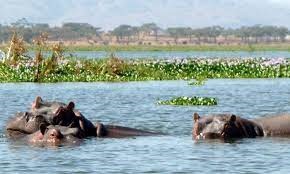The SPECIAL group took part in the annual migration of geoscientists to Vienna for the European Geosciences Union (EGU) General Assembly between the 23rd and 27th May. The EGU General…Read More >
early career
SPECIAL at the EAA Annual Meeting 2021 by Luke Sweeney
From the 6th to 11th of September, Sandy and I attended the 27th Annual Meeting of the European Association of Archaeologists “in” Kiel. As is the unfortunate norm of scientific…Read More >
A framework for new analyses of lake status data by Sandy Harrison
The Global Lake Status Database (GLSDB) has been widely used by the climate modelling community to evaluate model predictions of changing hydroclimate, most particularly changes in the monsoon regions in…Read More >
An improved statistical approach for reconstructing past climates from biotic assemblages. By Mengmeng Liu
How to know the climates at the remote past? Unfortunately, we don’t have a time machine to go back and measure them. We have to infer them from some indicators….Read More >
Team member highlight – WCRP/GCOS International Data Prize 2020
The WCRP/GCOS International Data Prize is awarded annually to an early- to mid-career researcher for their outstanding contribution to the Earth system science community, through achievements in data product generation, data…Read More >
The SPECIAL presence at the PMIP2020 meeting
The Paleoclimate Modelling Intercomparison project (PMIP; https://pmip.lsce.ipsl.fr/), which began in the early 1990s to provide an efficient mechanism for coordinating palaeoclimate modelling activities, held it’s biannual meeting in Nanjing (China)…Read More >
What are the drivers of regional-scale speleothem oxygen isotope trends? By Sarah Parker
The first paper of my PhD, “A data-model approach to interpreting speleothem oxygen isotope records from monsoon regions on orbital timescales”, is available online at Climate of the Past Discussions…Read More >
Virtual visit to the Tsinghua Tiger Team. By Sandy Harrison
This month I have been in Tsinghua virtually, working on a daily basis with the team in Earth Sciences: Han Wang, Huiying Xu, Shengchao Qiao, Yanghan Ren, Ziqi Zhu and…Read More >
The impact of methodological decisions on climate reconstructions using WA-PLS. By Mark Turner
Finally… long in the making, my “method” paper is out in Quaternary Research http://dx.doi.org/10.1017/qua.2020.44 today. It could not have been completed without a great deal of help from my co-authors…Read More >
A Method for Generating Coherent Spatially Explicit Maps of Seasonal Paleoclimates From Site‐Based Reconstructions by Sandy P. Harrison
The good news this morning is that Sean’s paper describing the new method he’s developed to reconstruct palaeoclimate using data assimilation techniques has been published (open access, of course) In…Read More >










